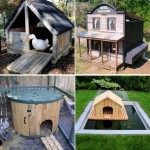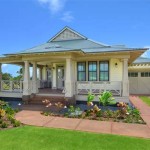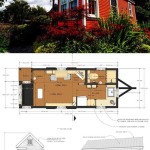SIP House Plans are a type of building plan that utilizes Structural Insulated Panels (SIPs) as the primary building material. SIPs are prefabricated panels consisting of an insulating foam core sandwiched between two layers of oriented strand board (OSB). They provide excellent structural strength, insulation, and energy efficiency, making them an attractive option for homebuilders.
The use of SIP House Plans offers numerous advantages. SIPs are lightweight, allowing for easier handling and faster construction times. Their superior insulation properties lead to significant energy savings, reducing heating and cooling costs. The prefabricated nature of SIPs ensures precision and quality control, resulting in a well-built and durable home. Whether constructing a cozy cabin in the woods or a modern suburban residence, SIP House Plans offer a versatile and cost-effective solution.
As we delve deeper into this article, we will explore the various advantages of SIP House Plans, including their energy efficiency, structural integrity, and design flexibility. We will also provide practical guidance on selecting the right SIP House Plan for your needs, ensuring you make an informed decision for your dream home.
SIP House Plans offer numerous advantages over traditional building methods. Here are 10 important points to consider:
- Energy efficient
- Structurally strong
- Durable and long-lasting
- Quick and easy to construct
- Cost-effective
- Design flexibility
- Environmentally friendly
- Pest and moisture resistant
- Soundproof
- Fire resistant
These factors make SIP House Plans an attractive option for homeowners seeking a high-performance, sustainable, and affordable building solution.
Energy efficient
SIP House Plans offer exceptional energy efficiency, resulting in significant savings on heating and cooling costs. The thick insulating foam core in SIPs provides a high thermal resistance, preventing heat loss in the winter and heat gain in the summer. This eliminates thermal bridging, a major source of energy loss in traditional construction methods.
- Reduced air leakage: SIPs are manufactured with precision, ensuring a tight seal between panels. This minimizes air infiltration, preventing heat loss and drafts.
- Continuous insulation: Unlike traditional framing methods that have gaps and insulation voids, SIPs provide continuous insulation throughout the building envelope. This eliminates thermal weak spots and ensures consistent insulation performance.
- Thermal mass: The OSB sheathing on both sides of the SIPs acts as thermal mass, absorbing and releasing heat slowly. This helps regulate indoor temperatures, reducing temperature fluctuations and improving comfort.
- Energy efficiency ratings: SIP House Plans typically achieve high energy efficiency ratings, such as ENERGY STAR certification. This demonstrates their ability to meet or exceed stringent energy efficiency standards.
The energy efficiency of SIP House Plans not only reduces operating costs but also contributes to a more sustainable and environmentally friendly home.
Structurally strong
SIP House Plans are renowned for their exceptional structural strength, providing homeowners with peace of mind and long-lasting durability. The unique composition of SIPs, with a solid foam core sandwiched between two layers of oriented strand board (OSB), creates a highly robust and resilient building material.
The OSB sheathing provides superior strength and rigidity, resisting bending and warping. This makes SIPs ideal for use in areas prone to high winds, earthquakes, and other extreme weather events. The foam core, typically made of expanded polystyrene (EPS) or polyurethane, acts as a strong and lightweight filler, contributing to the overall structural integrity of the building.
SIPs are engineered to distribute loads evenly throughout the structure, eliminating weak points and reducing the risk of structural failure. The panels are interconnected using specialized fasteners and adhesives, creating a monolithic building envelope that resists racking and shear forces. This robust construction ensures a solid and stable home that can withstand the test of time.
The structural strength of SIP House Plans offers several advantages. It allows for larger open floor plans with fewer load-bearing walls, providing greater design flexibility. The reduced need for internal supports also simplifies construction and reduces material costs. Additionally, the inherent strength of SIPs minimizes the risk of damage from accidental impacts or settling, ensuring long-term structural integrity.
Overall, the structural strength of SIP House Plans provides homeowners with a safe, durable, and resilient home that can withstand various environmental challenges and provide peace of mind for generations to come.
Durable and long-lasting
SIP House Plans offer exceptional durability and longevity, ensuring a home that stands the test of time. The unique construction of SIPs, with a solid foam core sandwiched between two layers of oriented strand board (OSB), provides inherent resistance to a wide range of environmental factors that can degrade traditional building materials.
Resistance to moisture and rot
SIPs are highly resistant to moisture and rot, which are common causes of deterioration in conventional homes. The closed-cell structure of the foam core prevents water absorption, while the OSB sheathing is treated to resist moisture damage. This combination creates a building envelope that is impervious to rain, snow, and humidity, preventing the growth of mold and mildew.
Resistance to pests and insects
SIPs are also resistant to pests and insects. The foam core is not a food source for pests, and the OSB sheathing is treated with borate to deter insects. This resistance to pests helps maintain the structural integrity of the home and prevents costly repairs or replacements due to pest infestations.
Resistance to fire
SIPs offer superior fire resistance compared to traditional framing methods. The foam core is a fire-retardant material, and the OSB sheathing is treated with fire-resistant chemicals. This combination slows the spread of flames and provides additional time for occupants to evacuate in the event of a fire.
Long-term structural integrity
The robust construction of SIPs ensures long-term structural integrity. The panels are engineered to withstand heavy loads and resist warping, bending, and cracking. This durability reduces the risk of structural issues that can occur in traditional homes over time, such as sagging floors, cracked walls, and roof leaks.
The durability and longevity of SIP House Plans translate into significant benefits for homeowners. They can enjoy a home that is resistant to damage, requires less maintenance, and has a longer lifespan. This peace of mind and reduced long-term costs make SIP House Plans an attractive investment for discerning homeowners.
Quick and easy to construct
SIP House Plans offer significant advantages in terms of construction speed and ease, allowing homeowners to build their dream homes more efficiently and with less hassle. The unique design and prefabrication of SIPs streamline the construction process, resulting in shorter build times and reduced labor costs.
Precision manufacturing and prefabrication
SIPs are manufactured in controlled factory environments using advanced technology, ensuring precision and quality control. Each panel is cut to exact specifications, eliminating the need for on-site framing and reducing the risk of errors. The prefabrication process also allows for the integration of electrical and plumbing components within the panels, further simplifying and expediting the construction process.
Fast assembly and reduced labor
The prefabricated nature of SIPs enables rapid assembly on-site. The panels are easily lifted into place using cranes or forklifts, and they can be quickly interconnected using specialized fasteners and adhesives. This streamlined process significantly reduces the amount of time and labor required compared to traditional stick-frame construction methods.
Simplified construction techniques
SIPs eliminate the need for complex framing techniques, such as joists, studs, and rafters. The panels themselves provide both structural support and insulation, simplifying the construction process and reducing the need for skilled labor. This makes SIP House Plans a viable option for owner-builders and those seeking a more hands-on approach to home construction.
Reduced weather delays
The prefabrication and rapid assembly of SIPs make construction less susceptible to weather delays. Unlike traditional construction methods that rely on multiple trades and materials, SIP House Plans can be enclosed quickly, protecting the structure from rain, snow, and other weather elements. This allows for a more consistent and efficient construction schedule, even in challenging weather conditions.
The quick and easy construction process of SIP House Plans offers numerous benefits to homeowners. Reduced construction times mean lower labor costs, earlier occupancy, and faster realization of the dream home. The simplified construction techniques and reduced weather delays contribute to a more efficient and stress-free building experience.
Cost-effective
SIP House Plans offer significant cost savings compared to traditional construction methods. The unique design and construction techniques of SIPs contribute to reduced material costs, labor expenses, and overall project costs.
Reduced material costs
SIPs are highly efficient building materials that combine structural support and insulation in a single unit. This eliminates the need for separate framing, insulation, and sheathing materials, resulting in substantial material cost savings. Additionally, the prefabrication of SIPs reduces material waste and the need for custom-cut pieces, further lowering material expenses.
Lower labor costs
The prefabrication and simplified assembly of SIPs significantly reduce labor requirements. The large panels can be quickly and easily installed, eliminating the need for complex framing and multiple trades. This streamlined construction process translates into lower labor costs, allowing homeowners to allocate their budget more efficiently.
Faster construction time
The quick and easy construction of SIP House Plans reduces the overall project timeline. The prefabricated panels can be assembled rapidly on-site, minimizing weather delays and allowing for faster occupancy. This reduced construction time translates into lower financing costs, as homeowners can move into their new homes sooner and start enjoying the benefits of homeownership.
Overall, the cost-effectiveness of SIP House Plans stems from the efficient use of materials, reduced labor requirements, and faster construction times. These factors combine to provide homeowners with a more affordable and cost-effective path to building their dream homes.
Design flexibility
SIP House Plans offer remarkable design flexibility, allowing architects and homeowners to create unique and customized homes that reflect their individual styles and needs. The versatility of SIPs enables a wide range of architectural designs, from traditional to contemporary, and from small cozy cabins to spacious luxury homes.
- Open floor plans: SIPs allow for larger open floor plans with fewer load-bearing walls, providing greater design freedom and flexibility in arranging interior spaces. This openness enhances natural light flow, promotes a sense of spaciousness, and accommodates various furniture layouts.
- Customizable shapes and sizes: SIPs can be manufactured in various shapes and sizes, enabling architects to design homes with unique geometries and architectural features. This flexibility allows for the creation of custom-tailored homes that cater to specific design preferences and site constraints.
- Multiple story designs: SIPs are suitable for constructing multi-story homes, including two-story houses and even taller structures. The structural strength and stability of SIPs allow for the creation of homes with multiple levels, providing additional space and design possibilities.
- Architectural details: SIPs can be easily integrated with various architectural details, such as bay windows, vaulted ceilings, and dormers. These features add visual interest and character to the home, allowing homeowners to create homes that are both aesthetically pleasing and functional.
The design flexibility of SIP House Plans empowers homeowners and architects to realize their dream homes without being constrained by traditional building methods. This versatility makes SIPs an attractive option for those seeking to build unique and personalized homes that meet their specific requirements and aspirations.
Environmentally friendly
SIP House Plans are recognized for their environmentally friendly attributes, contributing to sustainable building practices and reducing the impact on the environment. The unique design and materials used in SIPs promote resource conservation, energy efficiency, and waste reduction.
- Reduced resource consumption:
SIPs combine structural support and insulation into a single unit, eliminating the need for multiple materials and reducing overall resource consumption. They require less wood compared to traditional framing methods, conserving valuable forest resources.
- Improved energy efficiency:
The high insulation value of SIPs significantly reduces energy consumption for heating and cooling. This not only lowers utility bills but also decreases greenhouse gas emissions associated with energy production, contributing to a cleaner environment.
- Reduced construction waste:
The prefabrication of SIPs minimizes construction waste by eliminating the need for on-site framing and cutting. The precision manufacturing process reduces material scrap and ensures efficient use of resources.
- Recyclable materials:
SIPs are primarily composed of recyclable materials, such as oriented strand board (OSB) and expanded polystyrene (EPS) foam. At the end of their lifespan, SIPs can be recycled or repurposed, diverting them from landfills and promoting a circular economy.
By choosing SIP House Plans, homeowners can contribute to a more sustainable and environmentally conscious building process. The reduced resource consumption, improved energy efficiency, and waste reduction associated with SIPs align with the growing demand for eco-friendly construction practices.
Pest and moisture resistant
SIP House Plans offer exceptional resistance to pests and moisture, ensuring a durable and healthy living environment. The unique construction and materials used in SIPs effectively deter pests and prevent moisture penetration, contributing to the longevity and integrity of the home.
- Resistant to pests:
SIPs are not a food source for pests, and the OSB sheathing is treated with borate to deter insects. This resistance to pests helps maintain the structural integrity of the home and prevents costly repairs or replacements due to pest infestations.
- Resistant to moisture:
The closed-cell structure of the foam core in SIPs prevents water absorption, while the OSB sheathing is treated to resist moisture damage. This combination creates a building envelope that is impervious to rain, snow, and humidity, preventing the growth of mold and mildew.
The pest and moisture resistance of SIP House Plans translates into several benefits for homeowners. They can enjoy a home that is free from pests, mold, and moisture damage, which contributes to a healthier and more comfortable living environment. The reduced risk of structural damage and costly repairs provides peace of mind and long-term savings.
Soundproof
SIP House Plans offer exceptional soundproofing capabilities, creating a peaceful and quiet living environment. The unique construction and materials used in SIPs effectively absorb and block sound waves, reducing noise pollution from both external and internal sources.
The thick and dense foam core in SIPs acts as a highly effective sound barrier. It absorbs sound waves and dissipates their energy, preventing them from penetrating the interior of the home. Additionally, the OSB sheathing on both sides of the SIPs further enhances soundproofing by adding mass and rigidity to the building envelope.
The tight seals between SIPs and the minimal air leakage inherent in their construction contribute to their soundproofing abilities. Unlike traditional framing methods that have gaps and cracks, SIPs create a nearly airtight building envelope. This reduces the transmission of sound waves through gaps and openings, resulting in a quieter interior environment.
SIP House Plans are particularly effective in mitigating noise from outside sources, such as traffic, construction, and loud neighbors. The thick foam core and OSB sheathing act as a barrier, absorbing and blocking sound waves before they can enter the home. This creates a peaceful and serene living environment, even in noisy urban areas.
The soundproofing capabilities of SIP House Plans offer several benefits to homeowners. They can enjoy a quieter and more peaceful living environment, free from intrusive noise pollution. This can improve sleep quality, reduce stress levels, and enhance overall well-being. Additionally, the soundproofing properties of SIPs can increase privacy and confidentiality, making them a suitable choice for homes in close proximity to others.
Fire resistant
SIP House Plans offer superior fire resistance compared to traditional construction methods. The unique construction and materials used in SIPs provide inherent resistance to fire, ensuring a safer living environment for homeowners.
- Fire-retardant foam core:
The foam core in SIPs is typically made of expanded polystyrene (EPS) or polyurethane, both of which are fire-retardant materials. These materials resist ignition and slow the spread of flames, providing additional time for occupants to evacuate in the event of a fire.
- Fire-resistant OSB sheathing:
The OSB sheathing on both sides of the SIPs is treated with fire-resistant chemicals. This treatment helps prevent the spread of flames across the surface of the panels and reduces the release of toxic fumes.
- Minimal air leakage:
The tight seals between SIPs and the minimal air leakage inherent in their construction contribute to their fire resistance. Gaps and openings in traditional framing methods can act as pathways for fire to spread. SIPs, on the other hand, create a nearly airtight building envelope, reducing the risk of fire spreading through air currents.
- Slow burn rate:
SIPs have a slow burn rate compared to traditional wood-frame construction. The dense foam core and OSB sheathing resist combustion, delaying the spread of flames and providing more time for firefighting efforts.
The fire resistance of SIP House Plans offers peace of mind to homeowners, knowing that their homes are better protected against the devastating effects of fire. The inherent fire-retardant properties of SIPs, combined with their slow burn rate and minimal air leakage, contribute to a safer living environment and provide valuable time for evacuation in the event of a fire emergency.










Related Posts








